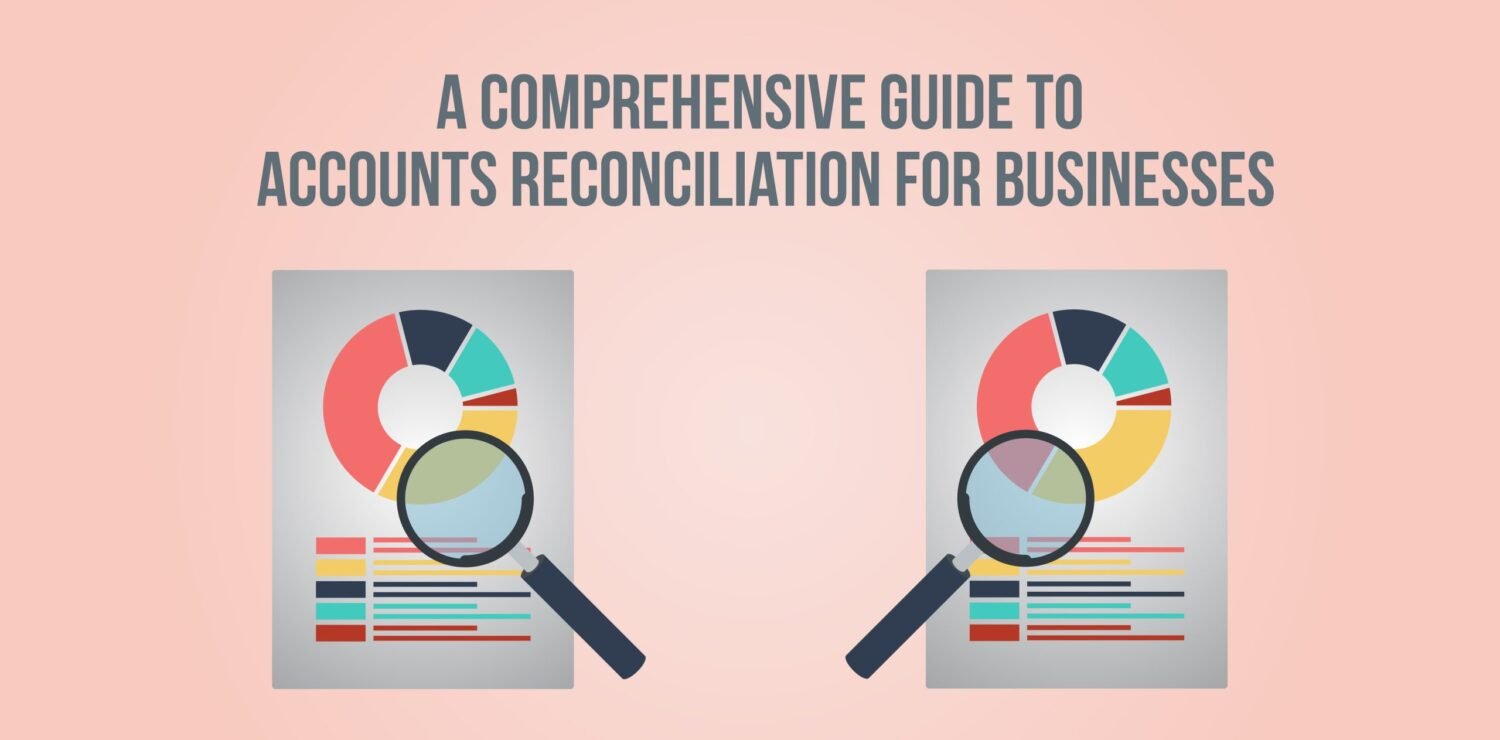
What Is Account Reconciliation?
Account reconciliation is a crucial financial process in which companies compare their internal financial records with external statements, such as bank statements, supplier invoices, and customer payments. This ensures accuracy, identifies discrepancies, and helps maintain compliance with accounting standards.
Why Account Reconciliation Matters
Proper account reconciliation prevents financial misstatements, ensures cash flow accuracy, and reduces the risk of fraud. Businesses rely on reconciliation processes to maintain transparency, enhance decision-making, and comply with regulatory requirements.
Types of Account Reconciliation
1. Bank Reconciliation
Bank reconciliation compares a company’s cash balance in its accounting records with its bank statement. This process identifies outstanding checks, deposits in transit, and bank errors.
2. Customer Reconciliation
Companies reconcile accounts receivable by verifying customer payments against invoices. This ensures that all payments are accounted for and that any discrepancies are resolved promptly.
3. Vendor Reconciliation
Businesses compare their accounts payable records with supplier statements to confirm that all invoices are recorded accurately and payments are processed correctly.
4. Intercompany Reconciliation
For organizations with multiple subsidiaries, intercompany reconciliation ensures that transactions between entities are recorded consistently, preventing duplication or omission of entries.
5. General Ledger Reconciliation
General ledger reconciliation involves verifying account balances by matching them with supporting documentation, ensuring accuracy in financial reporting.
The Account Reconciliation Process
Step 1: Gather Relevant Documents
The first step in reconciliation involves collecting financial records such as:
- Bank statements
- Invoices
- Receipts
- General ledger reports
- Subsidiary ledgers
Step 2: Compare Records
Compare internal records with external statements to identify any discrepancies. Differences may arise due to timing issues, errors, or fraudulent transactions.
Step 3: Identify and Investigate Discrepancies
Common discrepancies include:
- Missing transactions (e.g., bank fees not recorded in the books)
- Duplicate entries
- Errors in data entry
- Unrecorded deposits or payments
Step 4: Adjust Entries
After identifying discrepancies, businesses must correct errors by making adjusting journal entries to ensure financial statements accurately reflect the company’s financial position.
Step 5: Reconcile and Finalize
Once adjustments are made, companies document the reconciliation process, ensuring records are up to date and discrepancies are resolved.
Challenges in Account Reconciliation
1. Time-Consuming Manual Processes
Traditional reconciliation methods involve spreadsheets and manual verification, which are prone to errors and inefficiencies.
2. Data Inconsistencies
Discrepancies between records may result from timing differences, incomplete data, or human errors.
3. Fraud and Financial Irregularities
Failure to reconcile accounts regularly increases the risk of undetected fraudulent activities, leading to financial losses.
4. Compliance and Regulatory Requirements
Businesses must comply with financial reporting standards, such as GAAP (Generally Accepted Accounting Principles) and IFRS (International Financial Reporting Standards), requiring accurate reconciliations.
Best Practices for Effective Account Reconciliation
1. Automate the Reconciliation Process
Utilizing accounting software like QuickBooks, Xero, or SAP can significantly reduce manual errors and improve efficiency.
2. Reconcile Accounts Regularly
Performing daily, weekly, or monthly reconciliations helps detect issues early and prevents financial discrepancies from accumulating.
3. Implement Segregation of Duties
Assigning different personnel to recording transactions and reconciling accounts enhances internal controls and reduces the risk of fraud.
4. Maintain Clear Documentation
Keeping a detailed record of reconciliations ensures transparency, facilitates audits, and helps in resolving future disputes.
5. Conduct Periodic Audits
Internal and external audits help verify that reconciliation procedures are properly followed and that financial statements are accurate.
Technology in Account Reconciliation
1. AI-Powered Automation
Modern reconciliation software leverages artificial intelligence (AI) and machine learning (ML) to match transactions, flag anomalies, and reduce processing time.
2. Cloud-Based Solutions
Cloud-based accounting platforms allow real-time data access, enabling seamless collaboration between finance teams and external auditors.
3. Blockchain for Financial Transparency
Blockchain technology enhances security, prevents unauthorized alterations, and ensures an immutable financial record.
Conclusion
Account reconciliation is an essential financial control mechanism that ensures the accuracy and integrity of financial records. By implementing automated reconciliation solutions, following best practices, and maintaining rigorous internal controls, businesses can streamline operations, prevent fraud, and enhance financial reporting accuracy.
Faq’s
1. What are the key steps involved in the account reconciliation process?
The key steps in account reconciliation include:
- Gathering records: Collect bank statements, ledger entries, and transaction records.
- Comparing transactions: Match internal financial records with external statements.
- Identifying discrepancies: Spot missing, duplicate, or incorrect entries.
- Investigating differences: Determine the cause of any inconsistencies.
- Making adjustments: Record necessary journal entries to correct errors.
- Finalizing reconciliation: Verify that the adjusted balances match.
2. How often should businesses perform account reconciliation to maintain financial accuracy?
The frequency depends on the business size and transaction volume:
- Daily: Large businesses with high transaction volumes.
- Weekly: Businesses that handle moderate transactions and want tighter control.
- Monthly: Small businesses or those with low transaction volume.
- Quarterly or Annually: For specific accounts like long-term liabilities or fixed assets.
3. What are the most common errors found during account reconciliation, and how can they be prevented?
Common errors include:
- Missing transactions: Ensure all invoices and payments are recorded.
- Duplicate entries: Regularly review records to avoid double postings.
- Bank errors: Contact the bank for corrections.
- Timing differences: Account for outstanding checks and deposits in transit.
- Incorrect amounts: Cross-check invoices, receipts, and bank statements.
- Currency conversion issues: Use updated exchange rates for international transactions.
Prevention measures include automated reconciliation tools, standardized processes, and regular audits.
4. What tools and software can streamline the account reconciliation process?
Popular reconciliation tools include:
- QuickBooks (Small to mid-sized businesses)
- Xero (Cloud-based for small businesses)
- SAP ERP (Enterprise-level financial management)
- BlackLine (Automation for mid-to-large companies)
- Oracle NetSuite (Comprehensive cloud accounting)
- ReconArt (Specialized in reconciliation and compliance)
Automation helps reduce errors and speeds up the reconciliation process.
5. How does account reconciliation help in fraud detection and prevention?
- Identifies unauthorized transactions or fraudulent withdrawals.
- Detects duplicate payments or altered invoices.
- Highlights discrepancies that indicate accounting manipulation.
- Ensures compliance with financial controls, reducing risk of internal fraud.
- Provides an audit trail for external reviews and investigations.
6. What are the best practices for reconciling bank statements with financial records?
- Perform reconciliations regularly to avoid backlog.
- Use automation to reduce human error.
- Keep detailed documentation for audit and compliance purposes.
- Separate duties to ensure one person records transactions and another reconciles.
- Verify outstanding items like uncleared checks and deposits.
- Review bank fees and interest charges for accuracy.
7. How can automation improve the efficiency and accuracy of account reconciliation?
- Speeds up the process by automatically matching transactions.
- Reduces manual errors with built-in verification.
- Provides real-time updates on discrepancies.
- Improves audit readiness with clear documentation.
- Enhances security by tracking changes and approvals.
8. What challenges do businesses face when reconciling accounts, and how can they overcome them?
- High transaction volume → Use automated reconciliation tools.
- Lack of standard processes → Establish clear reconciliation guidelines.
- Bank discrepancies → Communicate with banks promptly.
- Time constraints → Schedule reconciliations regularly.
- Data entry errors → Implement validation rules and approval workflows.
9. How does account reconciliation impact financial reporting and decision-making?
- Ensures accurate financial statements by eliminating errors.
- Improves cash flow management by identifying outstanding payments.
- Enhances budgeting and forecasting with reliable financial data.
- Supports regulatory compliance and audit readiness.
- Helps detect and resolve fraud before it affects financial health.
10. What regulatory requirements should businesses consider when performing account reconciliation?
- GAAP (Generally Accepted Accounting Principles) – Ensures standard financial reporting.
- IFRS (International Financial Reporting Standards) – Compliance for global businesses.
- SOX (Sarbanes-Oxley Act) – Requires strict internal controls for public companies.
- Tax regulations – Ensures proper reporting of taxable income.
- Banking regulations – Aligns with anti-money laundering (AML) and financial reporting rules.
